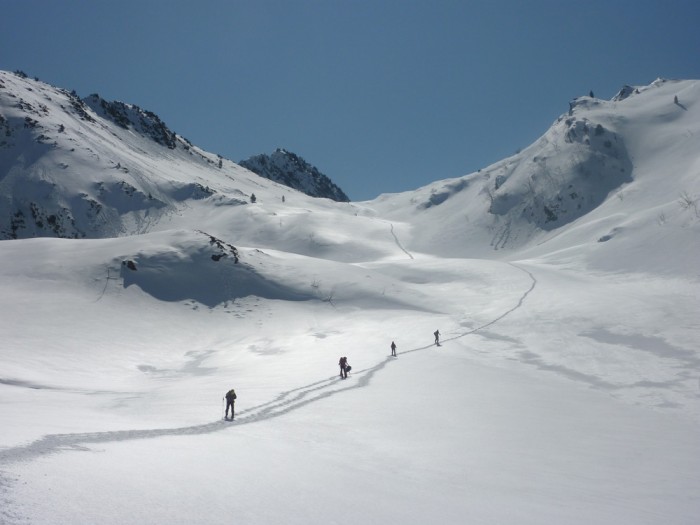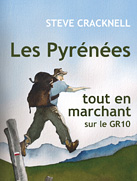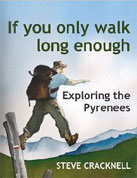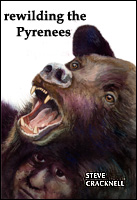Cet article est également disponible en: French
Feral: Rewilding the land, sea and human life by George Monbiot – a review
On ancient maps the space between the known world and terra incognita was often filled with dragons. We didn’t know much about it but we did know it was dangerous. This is Monbiot’s homeland.
In Feral (2013, Allen Lane), George Monbiot invites us to join him in this wild country inhabited by bears, wolves, elephants, lions and other megafauna. His story surfs from the personal to the global on a wave, sometimes joyously hopeful, sometimes blackly despairing. He is to be found cresting the rollers in his kayak or metaphorically floundering in the troughs where rockhopping trawlers have grubbed up the sea floor in their quest for scallops.
It is an exciting ride, an intelligent well-constructed book, full of insights, even if some of the propositions are fantastical.
Rewinding the clock
Conservation, he says, is not enough: we need to rewind the clock, to rewild, setting aside zones where nature is allowed to find her own way. Plants (particularly trees), fish, birds and animals would be reintroduced. The big question is which species belong in today’s overcrowded Britain (and around its coasts). I say Britain, but Monbiot targets Wales and Scotland. His hit list includes wild boar, bear, wolf, lynx, lion and elephant, all having lived in Britain in the past. He talks of reinstating trophic cascades (based on the idea that big animals eat smaller ones) – claiming that reintroducing megafauna predators is the best way to rebalance the out-of-kilter natural world. Our idea of nature, he says, is informed by what we saw as children, but every new generation brings a new degradation. The baseline shifts, and the next generation’s ‘nature’ is less authentic than the last one’s. Rewilding would reverse the trend.
He examines each species on his hit list in turn giving them a score of 1-10. Wild boar (10/10) are considered highly suitable for reintroduction and relatively uncontroversial. Lion scores 1. He is not very optimistic about its acceptability in the suburbs.
Sheep
On the other hand, he would like to see less of one species which has lived in Britain for 6,000 years: sheep. ‘I have an unhealthy obsession with sheep. It occupies many of my waking hours and haunts my dreams. I hate them.’
He goes on to explain that he doesn’t hate the animals themselves, just their impact on our ecology and social history. Sheep are famously voracious. As early as 1516 Sir Thomas Moore was complaining:
‘Sheep that were wont to be so meek and tame, and so small eaters, now, as I heard say, be become so great devourers and so wild, that they eat up, and swallow down the very men themselves. They consume, destroy, and devour whole fields, houses, and cities.’ Source
For Monbiot the ‘sheepwreck’ effect is most noticeable in the Cambrian Desert, a treeless area of upland Wales. The stultifying uniformity infuses him with ‘ecological boredom’.
‘Sheep farming in this country is a slow-burning ecological disaster, which has done more damage to the living systems of this country than either climate change or industrial pollution.’
The sheep farmer’s reply
He goes to see a Welsh sheep farmer, Dafydd Morris-Jones, whose family have been living in the same house in the Cambrian Mountains since 1885. To Monbiot’s credit he quotes the farmer’s points extensively:
‘Conservation should be about how we can live in nature. When it deviates from that, you forget that you’re still looking at it from a human perspective. I think rewilding is an oxymoron. As William Cronon points out, if you argue for wilderness for its own sake, you’re still imposing a human point of view.’
‘With blanket rewilding you lose your unwritten history, your sense of self and your sense of place. It’s like book-burning. Books aren’t written about people like us. If you eradicate the evidence of our presence on the land, if you undermine the core economies that support the Welsh-speaking population in the language’s heartland, you write us out of the story. We’ve got nothing else.’
Another sheep farmer, James Rebanks, has recently written on the subject. He doesn’t tackle Monbiot directly, but his Shepherd’s Life (Allen Lane, 2015) – a powerful evocation of what it means to be from a sheep-farming family – highlights the difference between rural and urban perspectives.
Squaring the circle
This leaves Monbiot in a quandary. He repeatedly states that rewilding should only happen with the consent of those most concerned. So how can you have rewilding without destroying traditional culture? Particularly as the most suitable areas are those where the last elements of traditional culture still survive.
His answer is to turn the farmers into nature wardens.
‘It is possible to envisage a thriving community of former farmers acting as wardens and guides, providing bed and breakfast, farm shops, clay-pigeon shooting, bicycle hire, horse riding, fishing lakes, falconry, archery and all the other services that now help rural communities to survive.’
How can he believe that clay pigeon shooting could replace sheep in farmers’ hearts without destroying the traditions they hold dear? How can he believe that tourists could provide a useful income without compromising rewilding? This is the weak point of the book.
So how could rewilding work? Here in the Pyrenees all attempts to reintroduce or reinforce the number of bears, wolves and vultures (to name but three species currently targeted) are met with opposition from a vocal sector of the farming community. To my mind rewilding will not receive sufficient approval from farmers, except – perhaps – on land which has already been abandoned and where the animals are prevented from disturbing current extensive grazing practices. But this doesn’t mean that the idea is unworthy of consideration.
More on rewilding and the Pyrenees
Personal rewilding
The second theme of Feral is personal rewilding. He wants to have something positive to offer. Ecologists, he says, are always saying no, not, shouldn’t. He proposes the joys of the ‘inner wild’. The emotional accounts of his discovery of his ‘inner wild’, though somewhat gonzo in style, add a personal note.
He describes his time as a young man with the Maasai:
‘Danger to them was a delicacy, to be sought out and savoured. They were volatile, passionate, impetuous, open to everything.’
We learn about their traditional cattle raiding parties, about how they kill a lion by cornering it, catching hold of its tail and spearing it to death. He witnesses the sacrificial killing of an ox by suffocation. He feels an affinity but cannot stand the pace and returns home.
Years later, in Wales, he tries to recover something of his wild youth. He goes fishing in his kayak and eats the mackerel he catches, raw. He goes on a quixotic search for albacore tuna and recounts how he narrowly escapes from drowning. He is suffering from ecological boredom; his cure is to risk his life!
He remarks on the fascination for Raoul Moat, the callous Northumbrian murderer who evaded the police for a week in 2010. A Facebook page entitled RIP Raoul Moat has attracted over 30,000 likes. Why was he lionised by some people?
Drawing on these and other examples, Monbiot suggests that we suffer from lack of adventure in our everyday lives.
Here be dragons.
PS: I wonder what he thinks of bull-fighting.












Footprints on the mountains